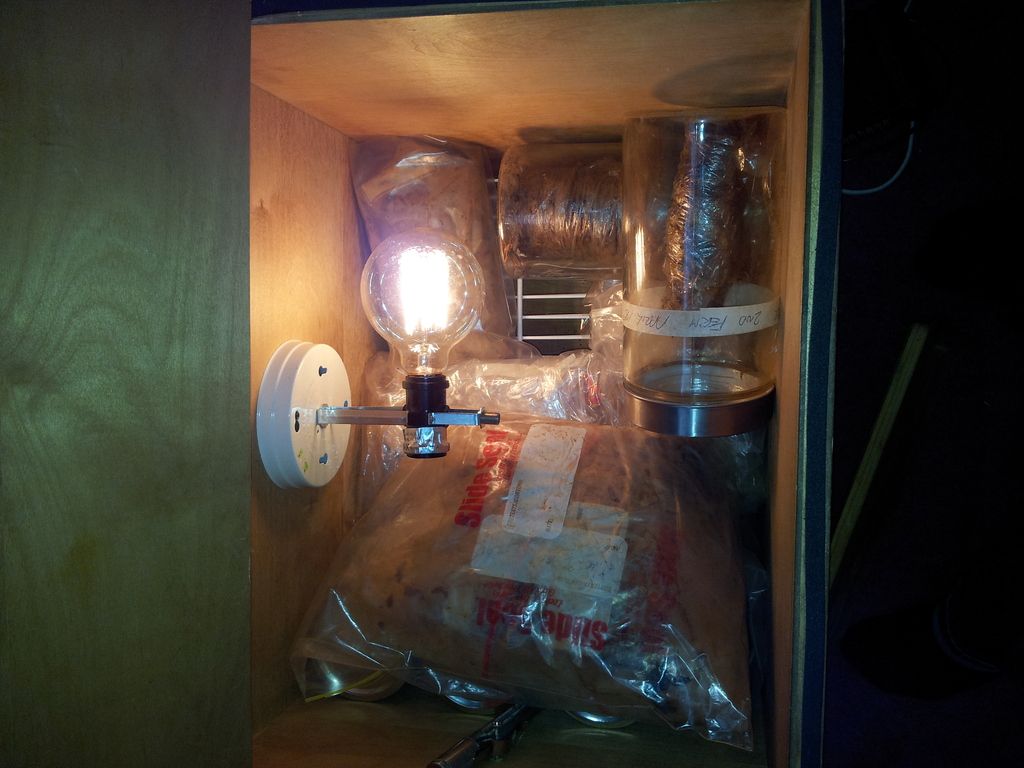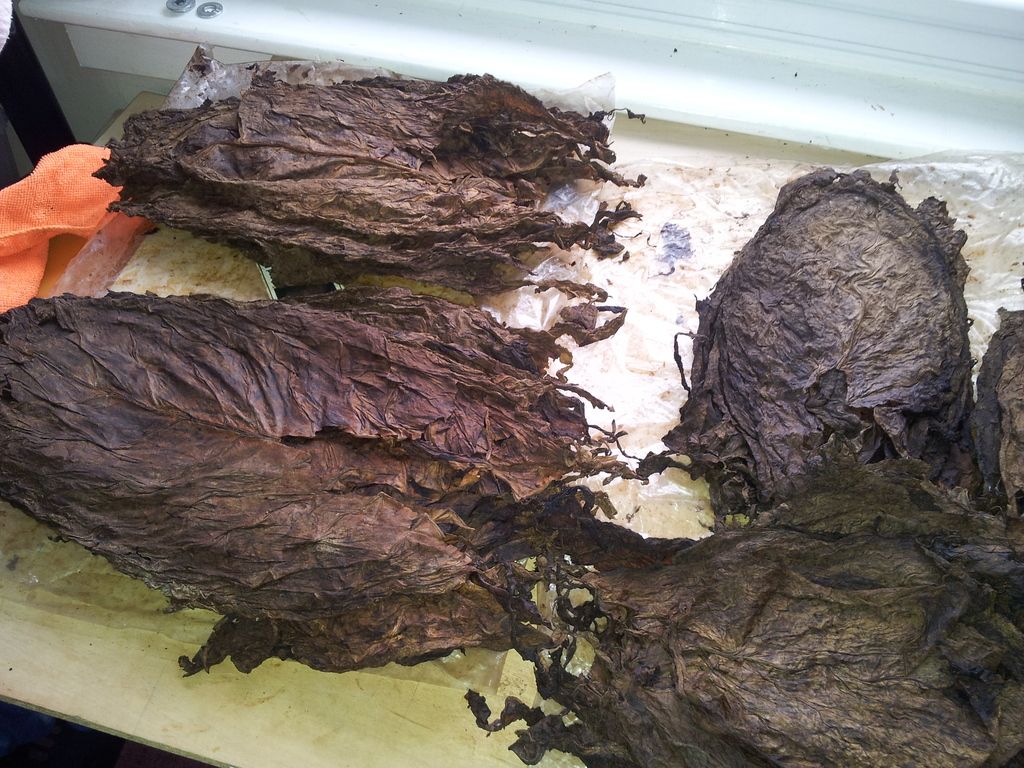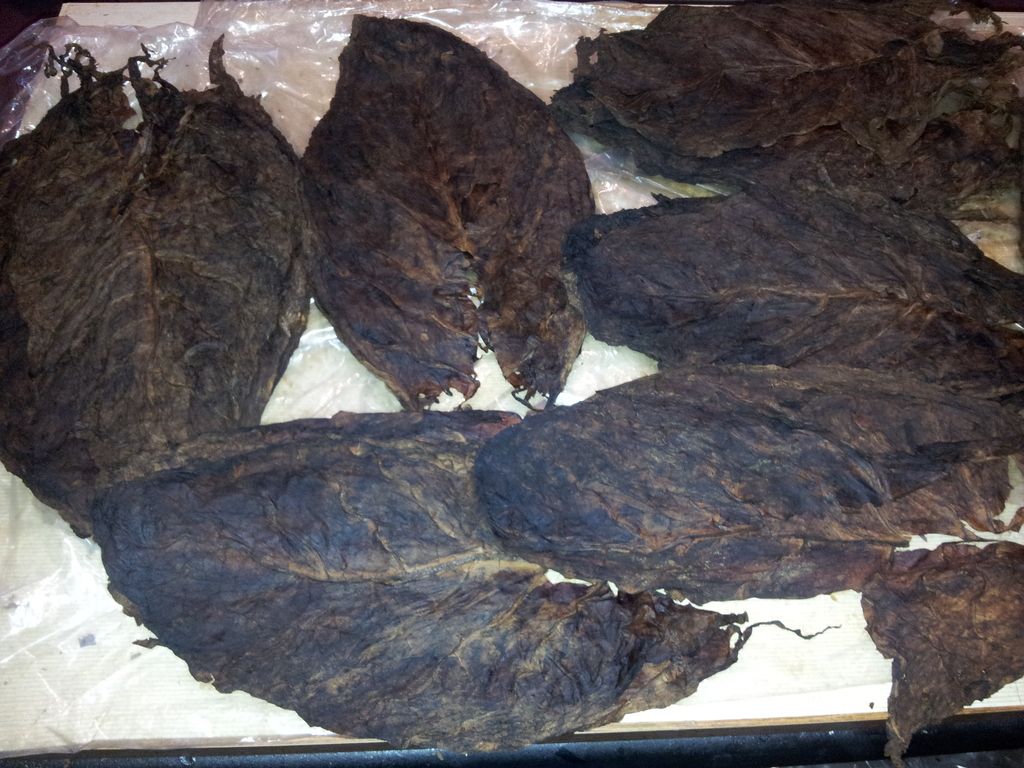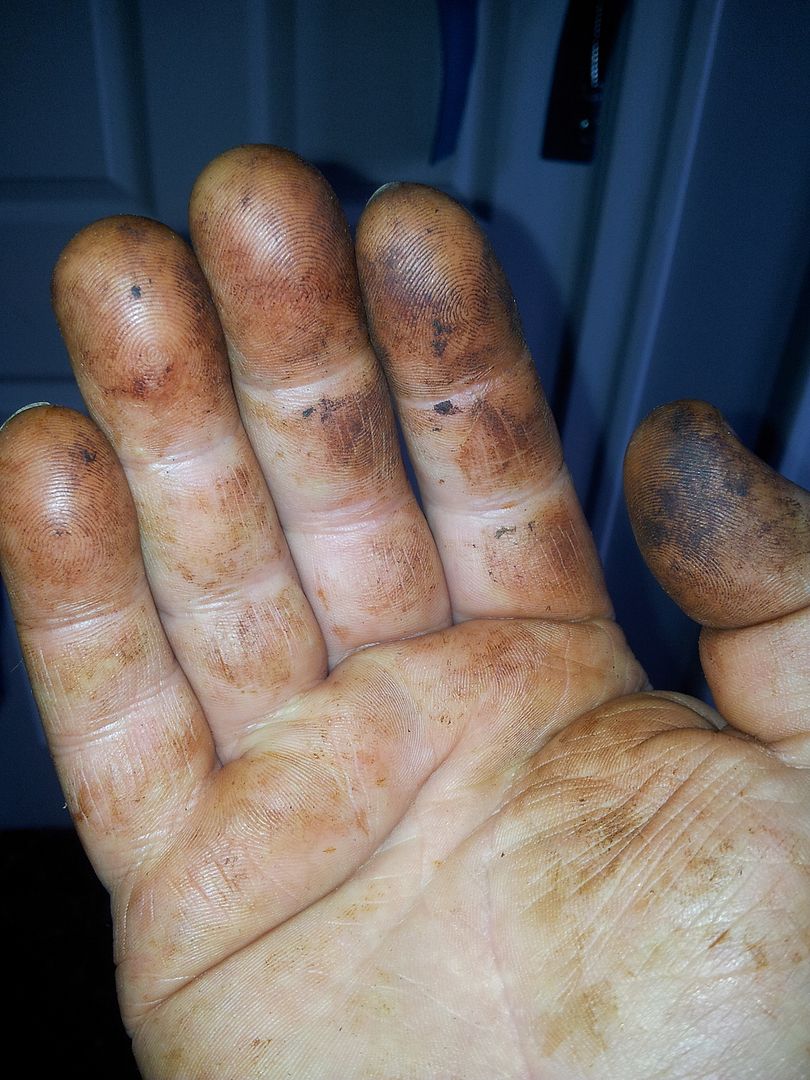Ferm-Fabulous!
- Thread starter smokepoleobsession
- Start date
- Joined
- Mar 15, 2016
- Messages
- 75
It is Lo nic leaf generously given to me by Bliss. Treated with a mixture of dark rum, citrus(pineapple and oranges) and water.Fermented between 110-115 degrees for a month. The leaf is checked a couple times a week to air out the ammonia and re spray if needed. I have made some pretty oily leaf but this stuff is just bonkers,I am thinking it is going to make some fantastic sticks.
- Joined
- Mar 15, 2016
- Messages
- 75
As soon as I get a chance I will post some pics of what I,m doing.Show us some pics of your fermenter setup here, will ya?
Thx
- Joined
- Mar 15, 2016
- Messages
- 75
Yes this particular leaf is damp. I will explain all that as soon as I get a bit of time.I will do a rundown of what I am doing and what I have learned.Do you put the tobacco in a bag or a container and then put it in the kiln?
How much do you wet the leaf? It looks damp?
What brand of rum?
- Joined
- Mar 15, 2016
- Messages
- 75
Ok For those who are curious and have not seen my set up here is what I use.

Just a big wooden box with a good lightbulb. You could get much more advanced but it isnt needed.
I have tried two different methods, I will list the good and the bad of each.
The best method I have found is to use glass jars.
Pros: Unless you drop them they last forever.
Your leaf will stay humidified quite well without the need to keep the whole interior of the box humidified.
Easy to label the jars with the type of leaf and date etc.
There is a slight greenhouse affect inside the jars so if your temp tends to run a bit on the low side the jars will maintain a slightly higher temp.
Cons: Unless you can find huge jars you are limited to how much leaf will fit. The leaf is moistened and rolled tightly then wrapped with shrink wrap.This mimics the pressure that the leaf would be under in a Pilon with many pounds of leaf stacked on top. It also keeps the leaf from unraveling and thus get damage when trying to remove it from the jars.
Jars must be opened to vent ammonia.
I have also used plastic bags.
Pros: You can do much bigger batches of leaf at once and fit much more volume inside the kiln.
The leaf remains flat and thus requires slightly less work .
Ammonia will vent through the plastic even without opening it.When I have used plastic bags the ammonia nearly knocked me over when I opened the box.
Cons: This method requires much more diligence. No matter how well wrapped it is the leaf will dry out MUCH quicker than it does in jars requiring the need to spray much more frequently. ( Gdaddy- that is why the leaf in the pick is damp.It was done in plastic and because of work It got left a couple of days longer than normal.The edges where a bit too dry to stand up to peeling the leaves apart so it had to be thoroughly sprayed in order to safely separate all the leaves.)

Here is the leaf almost dry.
The mixture I am using is made with a very small amount of cheap bacardi dark rum(1/4 cup for approx 2 litrs) and crushed raw orange and pineapple. I was adding additional enzymes but found it wasnt needed and is just added expense.
Other bits of info:
The length of time needed to ferment will vary from leaf to leaf. The strong presence of ammonia is the main indicator.
Thicker leaf such as ligero is more tolerant to being over dampened.The delicate wrappers can be ruined by too much moisture.
I found that wrapper will benefit greatly from more care when sprayed. I found that lightly rubbing with the back of my hand to spread the liquid out evenly produces a much more uniform color when the leaf is done.
When first spraying the leaf I found the easiest way is to lay a leaf down and spray it till there is a very light covering of droplets . Then lay the next leaf on top and repeat.The extra moisture on the top will be absorbed by the back side of the leaf you lay over it and will only require you to spray one side of the leaf.
Feel free to ask if anything is unclear.

Just a big wooden box with a good lightbulb. You could get much more advanced but it isnt needed.
I have tried two different methods, I will list the good and the bad of each.
The best method I have found is to use glass jars.
Pros: Unless you drop them they last forever.
Your leaf will stay humidified quite well without the need to keep the whole interior of the box humidified.
Easy to label the jars with the type of leaf and date etc.
There is a slight greenhouse affect inside the jars so if your temp tends to run a bit on the low side the jars will maintain a slightly higher temp.
Cons: Unless you can find huge jars you are limited to how much leaf will fit. The leaf is moistened and rolled tightly then wrapped with shrink wrap.This mimics the pressure that the leaf would be under in a Pilon with many pounds of leaf stacked on top. It also keeps the leaf from unraveling and thus get damage when trying to remove it from the jars.
Jars must be opened to vent ammonia.
I have also used plastic bags.
Pros: You can do much bigger batches of leaf at once and fit much more volume inside the kiln.
The leaf remains flat and thus requires slightly less work .
Ammonia will vent through the plastic even without opening it.When I have used plastic bags the ammonia nearly knocked me over when I opened the box.
Cons: This method requires much more diligence. No matter how well wrapped it is the leaf will dry out MUCH quicker than it does in jars requiring the need to spray much more frequently. ( Gdaddy- that is why the leaf in the pick is damp.It was done in plastic and because of work It got left a couple of days longer than normal.The edges where a bit too dry to stand up to peeling the leaves apart so it had to be thoroughly sprayed in order to safely separate all the leaves.)

Here is the leaf almost dry.
The mixture I am using is made with a very small amount of cheap bacardi dark rum(1/4 cup for approx 2 litrs) and crushed raw orange and pineapple. I was adding additional enzymes but found it wasnt needed and is just added expense.
Other bits of info:
The length of time needed to ferment will vary from leaf to leaf. The strong presence of ammonia is the main indicator.
Thicker leaf such as ligero is more tolerant to being over dampened.The delicate wrappers can be ruined by too much moisture.
I found that wrapper will benefit greatly from more care when sprayed. I found that lightly rubbing with the back of my hand to spread the liquid out evenly produces a much more uniform color when the leaf is done.
When first spraying the leaf I found the easiest way is to lay a leaf down and spray it till there is a very light covering of droplets . Then lay the next leaf on top and repeat.The extra moisture on the top will be absorbed by the back side of the leaf you lay over it and will only require you to spray one side of the leaf.
Feel free to ask if anything is unclear.
Last edited:
Very awesome write up and detail. I find this very interesting and helpful. I will definitely be rigging up something like this. Do you have a timer on the light or a temperature control?Ok For those who are curious and have not seen my set up here is what I use.
Just a big wooden box with a good lightbulb. You could get much more advanced but it isnt needed.
I have tried two different methods, I will list the good and the bad of each.
The best method I have found is to use glass jars.
Pros: Unless you drop them they last forever.
Your leaf will stay humidified quite well without the need to keep the whole interior of the box humidified.
Easy to label the jars with the type of leaf and date etc.
There is a slight greenhouse affect inside the jars so if your temp tends to run a bit on the low side the jars will maintain a slightly higher temp.
Cons: Unless you can find huge jars you are limited to how much leaf will fit. The leaf is moistened and rolled tightly then wrapped with shrink wrap.This mimics the pressure that the leaf would be under in a Pilon with many pounds of leaf stacked on top. It also keeps the leaf from unraveling and thus get damage when trying to remove it from the jars.
Jars must be opened to vent ammonia.
I have also used plastic bags.
Pros: You can do much bigger batches of leaf at once and fit much more volume inside the kiln.
The leaf remains flat and thus requires slightly less work .
Ammonia will vent through the plastic even without opening it.When I have used plastic bags the ammonia nearly knocked me over when I opened the box.
Cons: This method requires much more diligence. No matter how well wrapped it is the leaf will dry out MUCH quicker than it does in jars requiring the need to spray much more frequently. ( Gdaddy- that is why the leaf in the pick is damp.It was done in plastic and because of work It got left a couple of days longer than normal.The edges where a bit too dry to stand up to peeling the leaves apart so it had to be thoroughly sprayed in order to safely separate all the leaves.)

Here is the leaf almost dry.
The mixture I am using is made with a very small amount of cheap bacardi dark rum(1/4 cup for approx 2 litrs) and crushed raw orange and pineapple. I was adding additional enzymes but found it wasnt needed and is just added expense.
Other bits of info:
The length of time needed to ferment will vary from leaf to leaf. The strong presence of ammonia is the main indicator.
Thicker leaf such as ligero is more tolerant to being over dampened.This delicate wrapper can be ruined by too much moisture.
I found that with wrapper will benefit greatly from more care when sprayed. I found that lightly rubbing with the back of my hand to spread the liquid out evenly produces a much more uniform color when the leaf is done.
When first spraying the leaf I found the easiest way is to lay a leaf down and spray it till there is a very light covering of droplets . Then lay the next leaf on top and repeat.The extra moisture on the top will be absorbed by the back side of the leaf you lay over it and will only require you to spray one side of the leaf.
Feel free to ask if anything is unclear.
So you're saying your glass jars are not sealed but they hold moisture?
Whichisit?
Wonder whether one could ferment inside one of Don's plexiglass humidijars? I'm betting a jar like that inside my attic in summer would maintain 110 degrees even without a light bulb. Climb up and let the ammonia out time to time, is all.
Whichisit?
Wonder whether one could ferment inside one of Don's plexiglass humidijars? I'm betting a jar like that inside my attic in summer would maintain 110 degrees even without a light bulb. Climb up and let the ammonia out time to time, is all.
I can do the same thing in my garage here coming up. My concern is the temperature swings throughout the day though.So you're saying your glass jars are not sealed but they hold moisture?
Whichisit?
Wonder whether one could ferment inside one of Don's plexiglass humidijars? I'm betting a jar like that inside my attic in summer would maintain 110 degrees even without a light bulb. Climb up and let the ammonia out time to time, is all.
- Joined
- Mar 15, 2016
- Messages
- 75
No Glass jars are sealed.Bags will not hold moisture.So you're saying your glass jars are not sealed but they hold moisture?
Whichisit?
Wonder whether one could ferment inside one of Don's plexiglass humidijars? I'm betting a jar like that inside my attic in summer would maintain 110 degrees even without a light bulb. Climb up and let the ammonia out time to time, is all.


